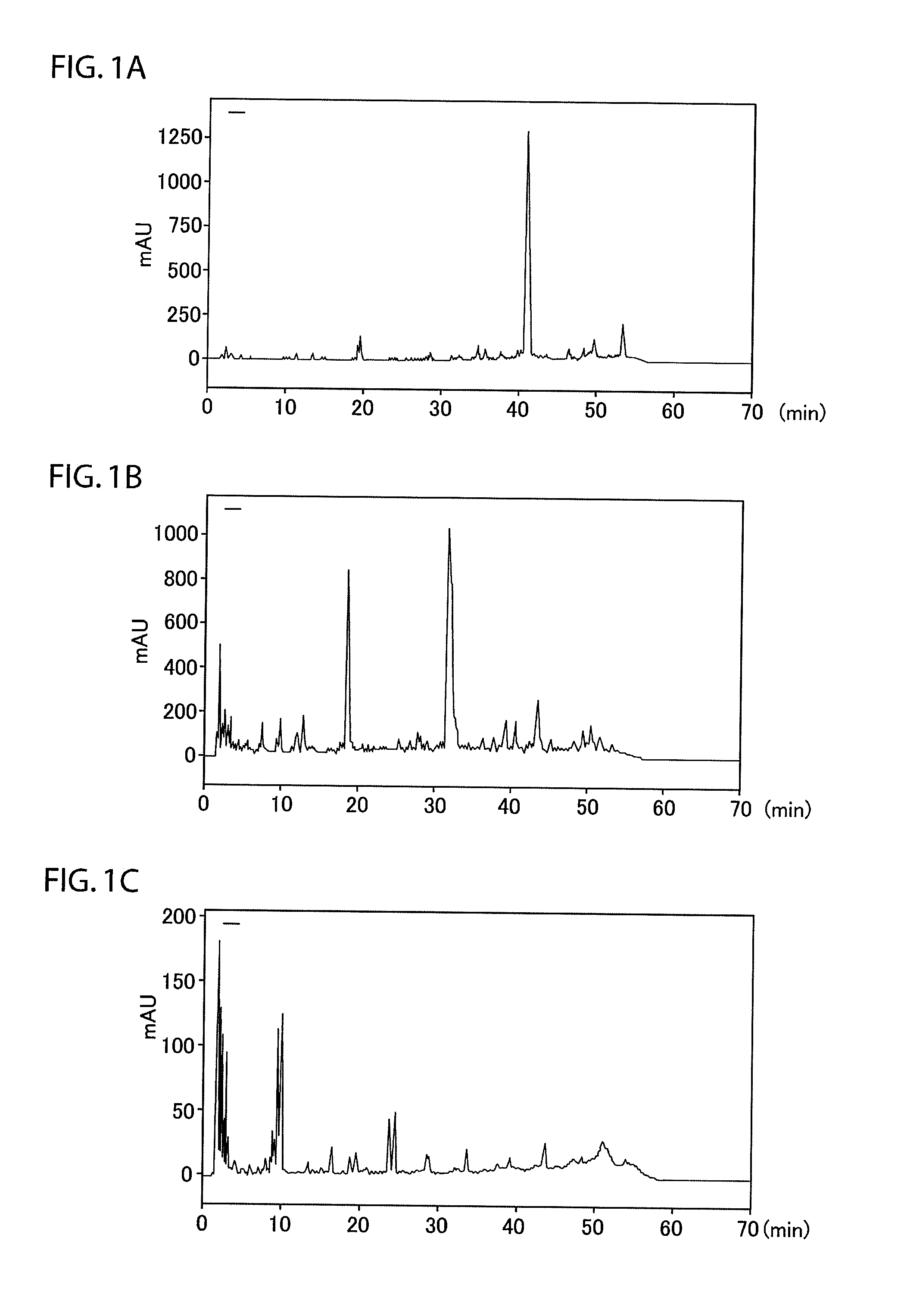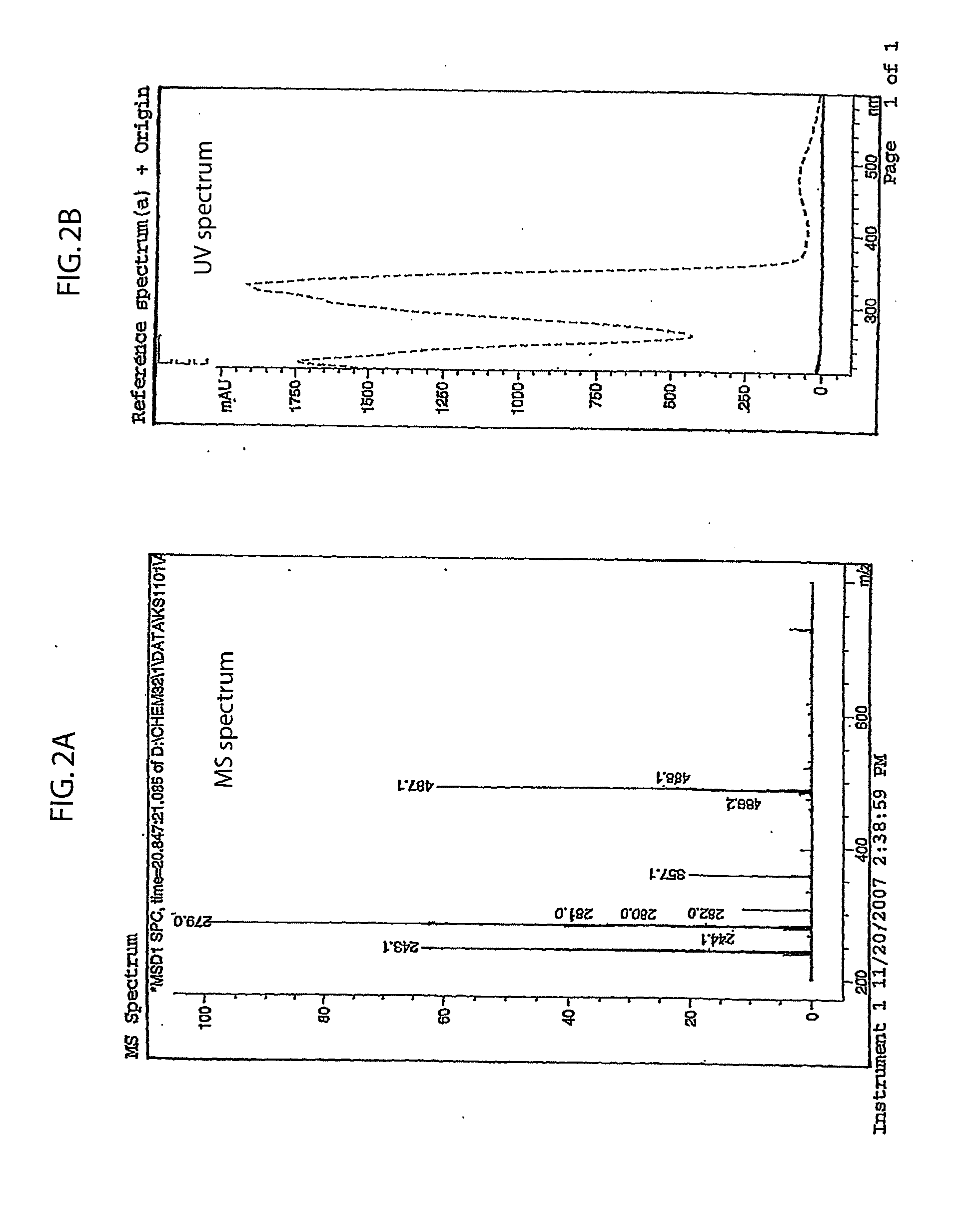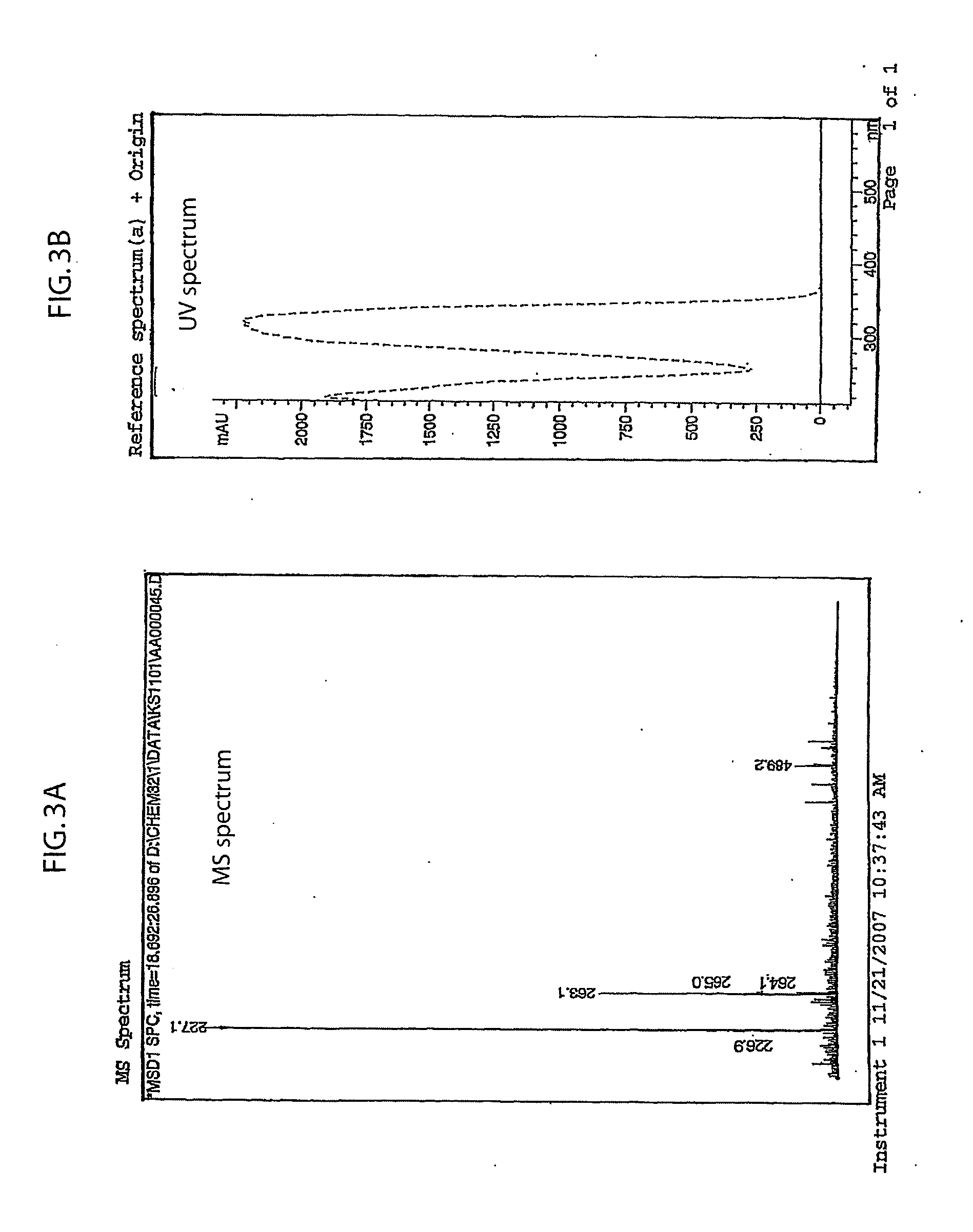Piceatannol-containing composition and method of producing piceatannol-containing composition
- Summary
- Abstract
- Description
- Claims
- Application Information
AI Technical Summary
Benefits of technology
Problems solved by technology
Method used
Image
Examples
Example
Test Example 1
Detection and Identification of Piceatannol from Passion Fruit
[0056]Passion fruit was divided into three parts of pericarp, sarcocarp, and seeds, and the parts were separately freeze-dried and pulverized by a pulverizer (product name “Sample mill type SK-M,” manufactured by KYORITSU RIKO K.K.), followed by extraction of the respective parts with 80% aqueous ethanol. The resultant products were centrifuged, the supernatants were then separated and concentrated by evaporation, and the concentrates were freeze-dried to obtain powders. The powders were dissolved in water to obtain extracts. Then, the seed extract, the pericarp extract, and the sarcocarp extract were diluted so that the concentrations in terms of solid content were 0.01 g / ml, 0.1 g / ml, and 0.1 g / ml, respectively, and 5 μl each of the extracts were subjected to HPLC.
[0057]Analysis conditions for HPLC were as described below.
[0058]Column: Mightysil RP-18 GP 150-4.6, diameter: 4.6 mm, length: 150 mm (manufactu...
Example
Test Example 2
Extraction of Piceatannol from Passion Fruit Seeds (1)
[0068]A method of extracting piceatannol from passion fruit seeds was examined. Specifically, extraction efficiencies of two kinds of passion fruit seeds (domestic and foreign-grown) were determined using different solvents.
[0069](1) Extraction with 80% Aqueous Ethanol
[0070]To 5 g of pulverized seeds were added 50 ml of 80% aqueous ethanol, and extraction was performed by ultrasonication for 30 minutes. The supernatant was collected, and extraction was further performed twice (three times in total) by the same procedures. The collected extracts were combined, and the volume of the resultant extract was adjusted to 200 ml with 80% aqueous ethanol, and 10 μl of the solution were subjected to HPLC. Then, according to a conventional method, piceatannol contained in the extract was quantified by assigning an area under the peak of the HPLC analysis to a calibration curve based on concentrations of a standard. It should b...
Example
Test Example 3
Extraction of Piceatannol from Passion Fruit Seeds (2)
[0079]The method of extracting piceatannol from passion fruit seeds was further examined. Specifically, an effect of a water content of ethanol or acetone as a solvent on the extraction efficiency was investigated.
[0080]To investigate the effect, piceatannol and resveratrol extracted from 5 g of freeze-dried seed powder of (the above-mentioned foreign-grown) passion fruit were quantified using ethanol or acetone with different water contents as the solvent in the same way as in Test Example 2. It should be noted that any of the solvents used in Test Example 2 above, ethyl acetate and dichloromethane, has poor compatibility with water, and hence it is impossible to prepare solvents with the same water contents.
[0081]The results are collectively shown in Table 2 below. Further, the results of the piceatannol are shown as a graph in FIG. 5. It should be noted that Table 2 and FIG. 5 show values obtained by converting t...
PUM
| Property | Measurement | Unit |
|---|---|---|
| Percent by mass | aaaaa | aaaaa |
| Mass | aaaaa | aaaaa |
| Mass | aaaaa | aaaaa |
Abstract
Description
Claims
Application Information
 Login to View More
Login to View More - R&D
- Intellectual Property
- Life Sciences
- Materials
- Tech Scout
- Unparalleled Data Quality
- Higher Quality Content
- 60% Fewer Hallucinations
Browse by: Latest US Patents, China's latest patents, Technical Efficacy Thesaurus, Application Domain, Technology Topic, Popular Technical Reports.
© 2025 PatSnap. All rights reserved.Legal|Privacy policy|Modern Slavery Act Transparency Statement|Sitemap|About US| Contact US: help@patsnap.com



